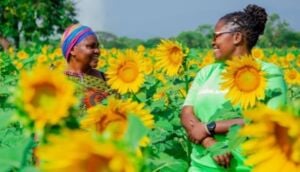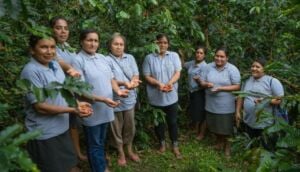‘Youth is the future. The leaders of tomorrow. Youth will change the world’. This is all true. But the rhetoric banded around at leadership events is not being matched by actions that enable youth’s full and meaningful participation.
Last month’s International Youth Day (12 August) serves as a powerful reminder that this needs to change.
Our world is challenged like never before. A recent UN report indicates that interlinked global crises like climate change, COVID-19 and the war in Ukraine are ‘wiping out’ years of progress on ending poverty and hunger. Young people can help reverse that trend. Yet, today’s youth, particularly those living in rural areas, face countless barriers to their ability to take up that role.
Of the 1.3 billion 15 to 24-year-olds in the world, around one billion live in developing economies, with about 70 percent living in rural areas. A startling one in five young people is ‘Not in Education, Employment, or Training’ – a status called NEET. This damages their long-term prospects, ultimately undermining the social and economic development of their countries.
Various factors lie at the root of the issue, and could worsen the situation, such as low family income, lack of quality education, and family responsibilities. Agriculture and forestry are critical to rural livelihoods, but many young people in these sectors struggle to earn decent incomes in decent conditions. About one-third of employed youth in developing economies are poor, with 13% of them living in extreme poverty, making less than US$1.90 per day. A growing list of “new” realities, including climate change and a relentless pandemic, are making things worse.
Waves of young people are migrating from rural areas in search of better jobs. This has consequences at a global level too. Smallholder farming in rural areas accounts for an estimated 70% of national food production in many countries, and 30-34% of the world’s total food supply. Since farming is considered unprofitable by young people, the farmer population is aging. Meanwhile, world food production needs to double by 2050 to feed the world’s growing population. Who is going to grow all that food?
It’s a no-brainer: we need more organisations to help these young people fulfil their potential and secure sustainable livelihoods in the regions where they are needed most.
In Calakmul, Mexico – a biodiverse region holding the largest remaining tropical forest in Central America – the Rainforest Alliance has been preparing young people for a meaningful and financially viable future within their communities. Carmelina Martínez Hernández, a 23-year-old from El Refugio, Calakmul, is part of the Our Forest, Our Future programme and is testament to what young people can achieve with the right resources. The programme’s many field experiences, expert visits and workshops ignited a passion in her for the forest and helped her successfully apply for a scholarship and enroll at Costa Rica’s EARTH University.
Carmelina told me: “I feel privileged. In my community, young people don’t have the resources to go to college. After I complete my degree in Agronomy this year, my plan is to create projects that help communities like mine to use natural resources in a more sustainable and efficient way, provide opportunities for better health and education, and ultimately build rural resilience and prosperity.”
Involving youth in a meaningful way is not just a tick box activity; it requires investment. At the Rainforest Alliance, we know proven practices exist:
Local governments and academic institutions must help ensure equal access to high-quality education, capacity-building, and training that reflects the needs of rural youth and local labour markets. Partnerships with the private sector (adapting curricula to include sustainable agriculture and natural resource management for example) are an effective way to align programmes with labour market needs, while increasing employment opportunities for young people.
Evidence suggests that young people thrive in settings that combine work experience with classroom learning. The private sector can provide incentives for youth to engage in agriculture and forestry —for example, through internships, apprenticeships, and training programmes – to prepare them for leading and managing rural businesses. Work-based learning experiences help young people build responsibility, communication, teamwork, and other socio-emotional skills, in addition to field-specific technical skills. It can also connect young people to careers and employers in industries with historic barriers to entry.
Next, governments and business leaders need to bring young people, especially the more marginalised, into the rooms where strategies and policies are developed – particularly those that impact youth. Intergenerational dialogues help young people learn about the progress made by generations before them, while older generations better understand the barriers facing younger people and can collaborate to find solutions.
Whether in physical spaces like schools and work, or virtual places like social media, developing and sustaining ‘safe spaces’ where young people in all their diversity can share experiences, support each other and feel comfortable and valued, is equally critical.
Access to finance is crucial for young people pursuing careers in agriculture and forestry. Interventions can focus on altering the requirements around accessing finance so that more young people can open accounts and take out loans. Financial education and entrepreneurship training will also help. Public policies promoting sustainable practices can improve productivity and resilience in farming and forestry, making these sectors more profitable and attractive to young people. Businesses can also play an important role here by addressing the gap in living income and living wages in value chains.
Crucially, gender dimensions—for example restrictions on women’s education and land rights – must be considered in all youth engagement activities. Young women are even more disadvantaged than young men.
For these initiatives to translate into real change, we need all stakeholders to set measurable actions and outcomes to improve the level and depth of youth engagement. History has shown that if young people are set up for success, they have the power to change the world.
This article was previously featured on Edie Net










